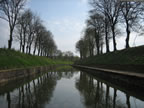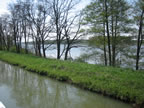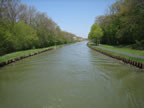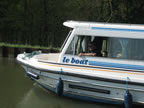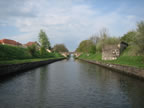Hause-Boat Holiday in Alsace, France |

We picked up the boat „Rialto“ in the port of Hesse on the Marne-Rhine canal. The canal, which covers a distance of 314 km, was dug in the middle of the 19th centruy to provide an East-West link between the Parisian basin and the Rhine valley. Over the years, the depth of the canal and the 155 locks along the way were modified to cater for a thriving commercial traffic. Thanks to the strategic situation, these waterways are still used by commercial barges but mostly they provide interesting itineries for leisure craft. The majority of locks are now automised, which is a pity because we quite liked the old, manual locks! |
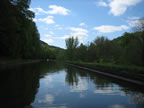 |
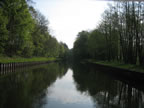 |
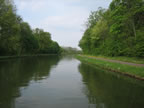 |
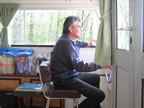 |
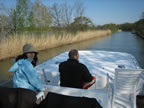 |
We started off west of Hesse and after the village Gondrexange, we turned north and followed the Sarre Colliery Canal. The canal was dug in 1860 to ship coal from Sarrebruck towards the factories at Mulhouse. It follows the Sarre valley for a distsance of 64 km, covering 27 locks which make up for big difference in level of 73 metres. Despite its origin as a transport canal, it offers a picturesque route through lakes and forests. |
The locks here are still manual and a lock keeper accompanied us all the way to Mittersheim. We all had a go at turning the wheel to close the heavy doors. On the left bank of Mittersheim is the entrance to the old Canal des Salines. The construction of this canal, which was to be used to transport salt from salt works at Dieuze, began in 1809, well before that of the Colliery Canal. (Only a short section of 4 km between Mittersheim and Loudrefing was completed and opened to navigation in 1881). |
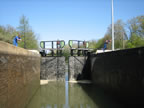 |
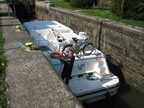 |
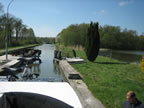 |
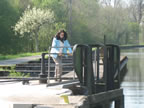 |
On the third day we headed back towards the east of Hesse on the Marne-Rhine canal. We stopped in Niderviller where we visited a porcelain factory. |
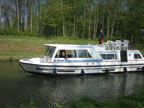 |
 |
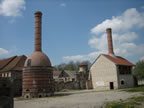 |
Next morning, before reaching the inclined plane at Arzviller, we had to pass through two tunnels: the Niderviller tunnel (475m) the Arzviller tunnel (2306 m). |
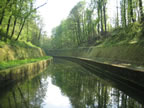 |
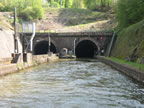 |
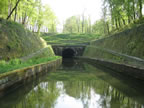 |
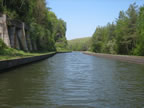 |
The old staircase of 17 locks west of Arzviller tunnel posed a problem to barge men for its very short pounds made manoeuvring difficult and slow. The solution chosen to remove this bottleneck was a transversal inclined plane. The construction of the water slope was commenced in 1964 and completed in 1968. The dimensions of this structure are most impressive: 44,55m high and 128,65m long. Originally it took 8 hours to go through the 17 locks. To negotiate the water slope takes only 25 minutes including the time taken to moor up. |
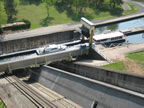 |
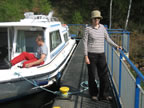 |
 |
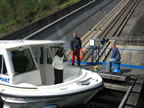 |
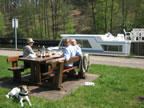 |
We continued along the Marne-Rhine canal until we reached Lutzelbourg. This picturesque village with long quays, is dominated by the ruins of a chateau dating back to the 19th century |
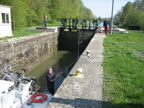 |
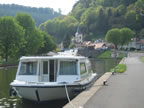 |
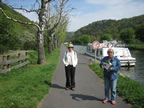 |
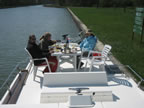 |
After negotiating a deep, double lock we reached Saverne. The entrance to the port was unforgetable as the canal curves around the impressive chateau of Rohan allowing us to admire it from every angle. |
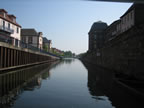 |
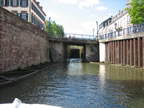 |
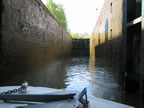 |
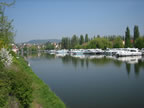 |
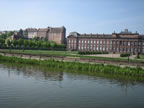 |
The chateau is a former Episcopal residence restored by Napoleon III and converted into barrarcks after 1870. The building now houses a cultural centre, a primary school, the local youth hostel and a museum. Because of the facade and the splendid gardens behind the castle, it is called the „Versailles from the Alsace“. |
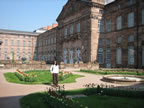 |
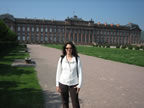 |
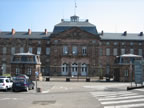 |
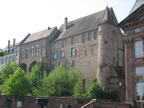 |
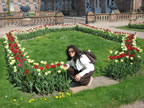 |
The pedestrian area in the center of Saverne is lined with shops, tea-houses and restaurants, among them the oldest tavern in Saverne, the famous Katz tavern, built in 1605. |
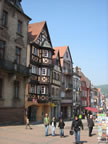 |
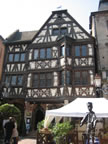 |
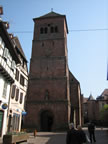 |
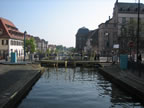 |
Next we visited the Chateau Haut-Barr, called the „Eye of Alsace“. Errected in 1583, this castle was built on three rocks at an altitude of 470m and offers a stunning view of the whole Alsace plain. Legend has it that a bishop from Strasburg founded here the „Fellowship of the horn“ which obliged its members to empty in one go an enormous horn filled with alsace wine. These merry fellows have now left the chateau but the view is still as beautiful as ever though it was a little hazy unfortunately. |
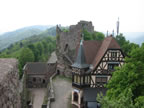 |
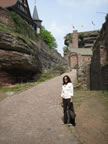 |
 |
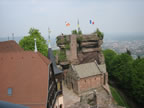 |
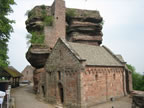 |
We spent the night in Steinbourg (a stalk reserve) and the next morning we headed back to the port of Hesse. From there we drove six kilometers to Sarrebourg where we could admire the 13th century chapel with its stained glass window (the biggest in Europe) designed by Chagall. |
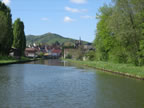 |
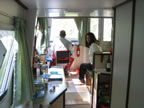 |
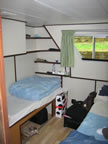 |
